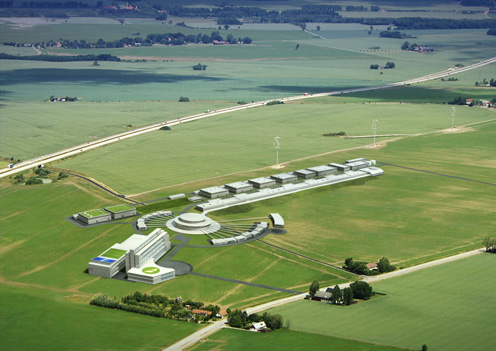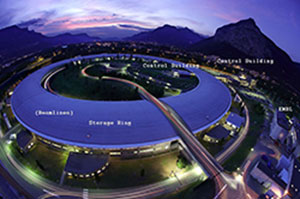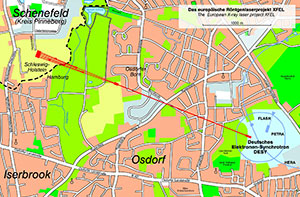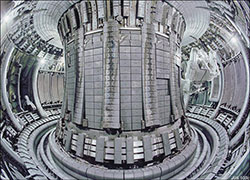External facilities
Researchers at DTU Physics use and contribute with advanced instruments to a number of large scale research facilities around the world – either as their primary research equipment or as a supplement to in-house laboratory facilities. These facilities comprise x-rays sources (synchrotrons), neutron sources, and fusion reactors. Below are shown short descriptions of the mostly used facilities along with a link to the research group(s) at DTU Physics that use the facilities.
Neutron Sources

The ESS will share a campus with the MAX-IV synchrotron, currently under construction in Lund.
Please consult NEXMAP's web pages for more information
X-ray Scattering at Synchrotrons

The ESRF shares campus with the leading Europan research reactor for neutron scattering, the Institut Laue-Langevin (ILL).
Please consult NEXMAP's web pages for more information.
Please consult SURFCATS's web pages for more information
X-ray Scattering at Free Electron Lasers

In the near future when E-XFEL becomes operational, it will surpass LCLS at SLAC in Stanford, as the worlds most powerful XFEL. E-XFEL is located in Hamburg, close to the Deutsches Elektronen Synchrotron (DESY).
Please consult NEXMAP's web pages for more information.
Fusion Reactors

The section for Plasma Physics and Fusion Energy (PPFE) has access to nearly all mayor fusion experiments within the topics turbulent transport and fast ion diagnostics. PPFE operates the CTS diagnostic, on Asdex Upgrade near Munich (Germany) and participate in the scientific exploitation of the common European device, JET close to Oxford (UK).
ITER in Cadarache (France) is the next step fusion energy experiment build in collaboration between EU, China, Japan, India, Korea, Russia and the USA. It is the biggest scientific facility in the world. PPFE participates actively by experts seconded to the ITER organization and have also contributed to parts of the design.
Please consult PPFE's web pages for more information.